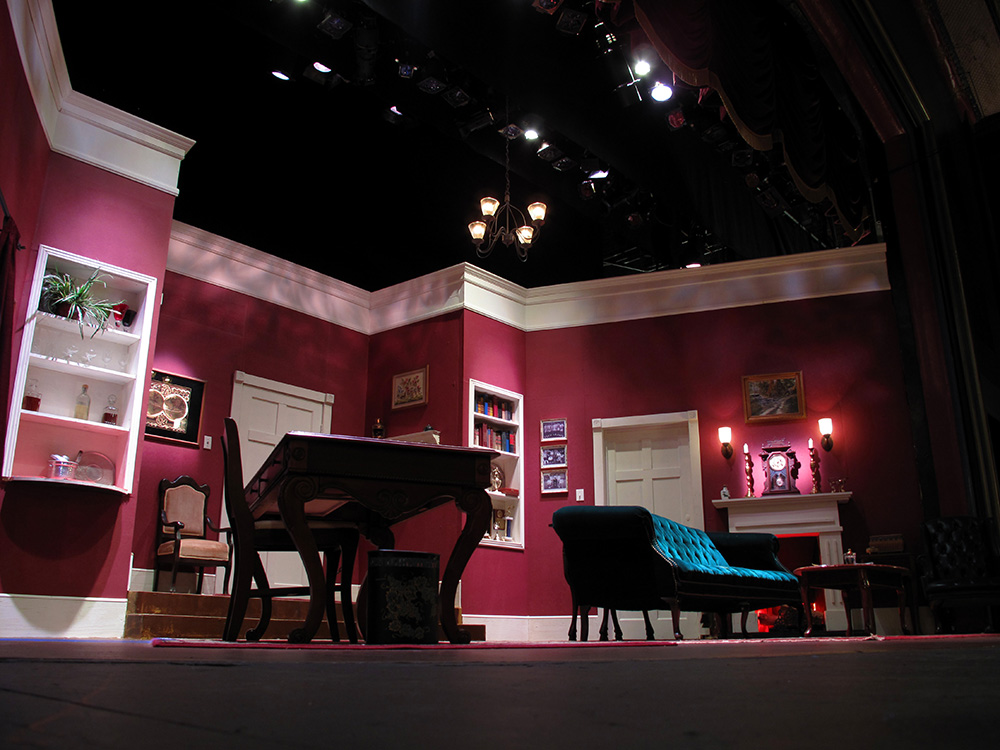Dialing out
Our 15-performance run of Dial ‘M’ for Murder ends tomorrow with a 2 p.m. matinee. After final bows, I’ll walk back to the James to wash my hair (begone, styling gel!) and load up the car. Then I’ll drive into town to enjoy one last meal at Cafe 121, by far my local restaurant of choice.
I met cafe owner Gregg “Chef” Hamm at brunch one day in October after sending my server to find out if Hamm’s “signature hash brown bites” are made with flour, which it turns out they are. Hamm, a sweetly smiling man in culinary togs, came out of the kitchen to ask if I’m gluten-intolerant. I answered in the affirmative and he offered to substitute grilled asparagus for the potatoes.
Hamm’s emphasis on fresh produce and careful presentation stands out like a healthy thumb among Sanford’s sugar-fried country cookeries. The most venerated of these is Mrs. Wenger’s, about which one customer posted this telling endorsement at Urbanspoon.com: “Breakfast is the best. Especially the biscuits. Just get a stack. Add butter and jelly. Slam your face in the middle and chomp away.”
Like Cookie Monster, I suppose.
![]()
Between dinner and departure on Sunday, I’ll sing for a man named Hoagie (aka Michael Hoagland). He’s Peggy Taphorn’s freelance musical director, jobbed in for Temple’s third annual production of A Christmas Carol, which Hoagland adapted. If I pass muster and if December box office receipts justify bringing the show back next year, I’ll join the cast in 2012.
![]()
The five weeks that it’s taken us to rehearse and perform Dial ‘M’ have gone swimmingly well. A patient, thoughtful director and a soid cast of friendly adults. Receptive, if somewhat smallish houses, trending up over time. I used both of our three-day breaks to visit nearby towns … Pittsboro, Cary, Carrbobo, Apex, Durham and Chapel Hill. There’s even a used book store in Sanford where I’ve bought books to read on a bench facing the fountain at Depot Park. Bright, cool weather, too, and just enough design requests to keep me in touch with reality.
All in all, it’s been about as much like a vacation as a job can be.
![]()
Author, inventor and futurist Ray Kurzweil predicts that man and machine will merge at the cellular level by 2040. The implications of this development, which he calls the “singularity,” are enormous. Immortality, omniscience, omnipotence, omnipresence … godhood, in other words. If he lives to see his prophecy fulfilled, and he seems confident that he will despite a conginetal heart defect, Kurzweil believes that he’ll be caught up in a technological rapture, his consciousness stored in the cloud, his body optionally upgraded or discarded.
According to Kurzweil, the singularity is our only alternative to annihilation. Until then, all we are as individuals will be what we keep inside our skin.
In his book Science and the Near-Death Experience: How Consciousness Survives Death (which I have to admit I didn’t finish), Chris Carter argues that the brain transmits consciousness. He’s a dualist. Kurzweil, a non-dualist, argues that the brain produces consciousness.
Campbell compares the brain to a radio. Non-dualists whack the radio and say, “There. You see? Whacking the radio causes the music to stop, so the radio itself must have been producing it.” Dualists believe that consciousness – the soul, if you like – exists independently of the body. Whack a radio hard enough, they say, and you destroy the radio, not the music. The music, though undetectable by us, remains where it always was. In the ether.
